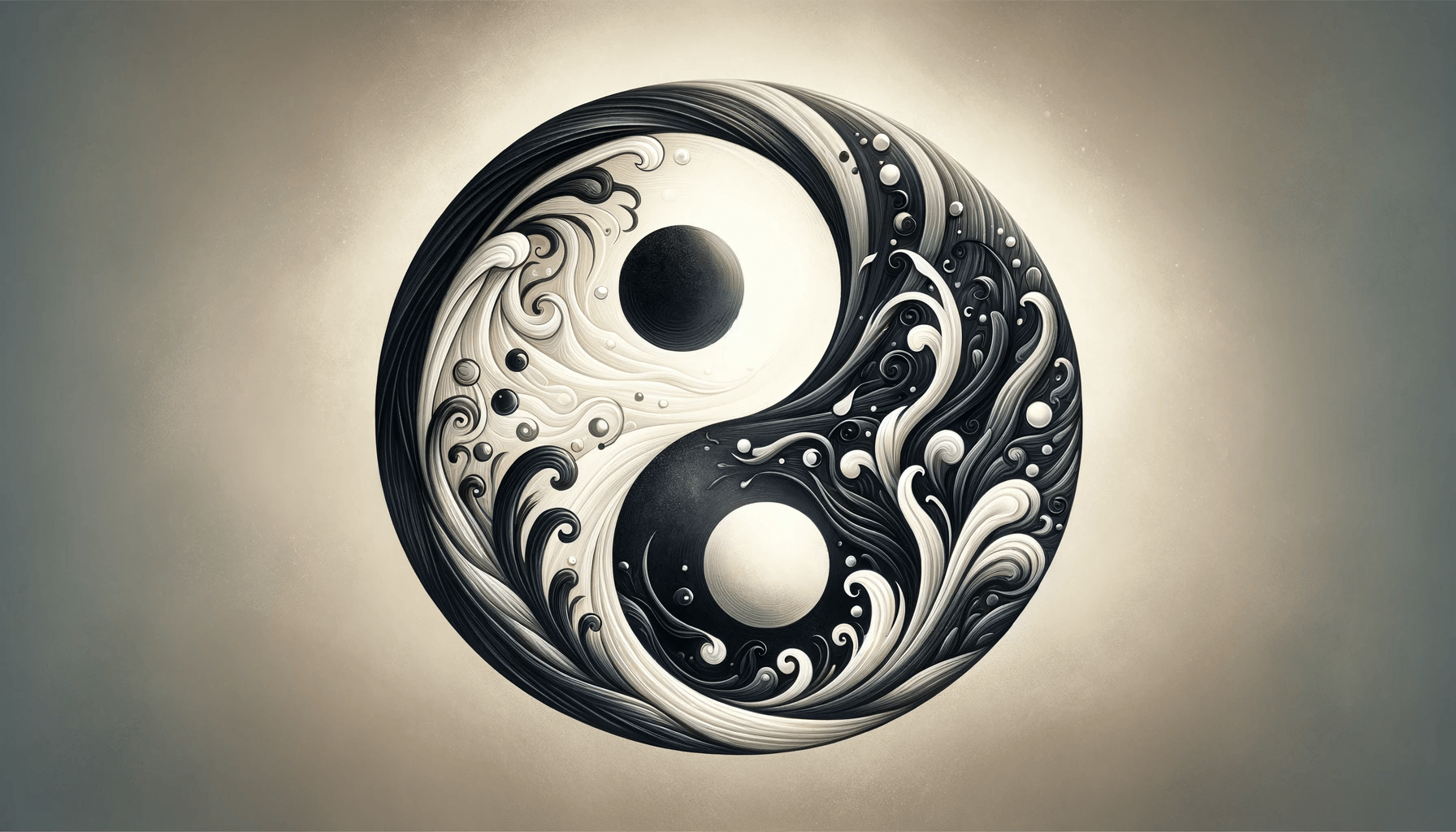Sponsored By Awaken Your Great Self
Table of Contents
Introduction to Yin and Yang
In Chinese philosophy and culture, few concepts are as pervasive and influential as Yin and Yang. These two seemingly opposing forces represent the ever-present duality in the universe. Originating from ancient Chinese wisdom, Yin & Yang are symbols deeply rooted in the understanding of balance and harmony. In this article, we will delve into Yin & Yang’s origins, meaning, and symbolism, exploring their presence in nature, health, relationships, and daily life.
The Origins of Yin and Yang
The concept of Yin and Yang can be traced back thousands of years to ancient China. It is believed to have originated from the ancient Chinese philosophy of Taoism, which emphasizes the interconnectedness and interdependence of all things. According to Taoist teachings, Yin & Yang are the two fundamental forces that govern the universe and everything within it.
The Meaning of Yin and Yang
Yin and Yang are often depicted as two opposite yet complementary forces. Yin represents the feminine, passive, and receptive aspects, while Yang symbolizes the masculine, active, and assertive qualities. However, it is essential to note that Yin & Yang are not absolute opposites but complementary and interdependent forces. They are like two sides of the same coin, constantly interacting and balancing each other.
Yin & Yang in Chinese Philosophy and Culture
In Chinese philosophy, Yin & Yang are the fundamental principles underlying all aspects of existence. They are believed to be present in every part of life, from the smallest particle to the largest celestial body. This concept is deeply ingrained in Chinese culture and has influenced various aspects of Chinese life, including medicine, art, and even the practice of Feng Shui.
Symbolism of Yin & Yang
Yin and Yang are rich in symbolism and represent many concepts and ideas. The circular symbol of Yin & Yang, known as the Taijitu, illustrates the balance and harmony between the two forces. The black and white halves of the logo represent Yin & Yang, with a small dot of each colour within the opposing half, symbolizing the potential for transformation and interplay.
Yin and Yang in Nature and the Universe
The presence of Yin and Yang can be observed throughout the natural world. Day and night, summer and winter, light and darkness are just a few examples of the dynamic interplay of Yin & Yang in nature. Yin is associated with darkness, coldness, and stillness, while Yang embodies light, heat, and movement. The balance between these forces is essential for the harmonious functioning of the natural world.
Yin & Yang in Health and Wellness
The principles of Yin & Yang also find application in the realm of health and wellness. In traditional Chinese medicine, the balance of Yin & Yang is vital for maintaining physical and emotional well-being. An imbalance in these forces is believed to cause illness and disease. Various practices, such as acupuncture, herbal medicine, and Qigong, aim to restore the harmony between Yin and Yang in the body, promoting overall health and vitality.
Applying Yin & Yang in Daily Life
Understanding the concept of Yin and Yang can have profound implications for our daily lives. By recognizing and embracing the duality of existence, we can learn to navigate life’s challenges with grace and equanimity. Balancing work and rest, embracing both solitude and social interaction, and finding harmony between activity and relaxation are just a few ways we can apply the principles of Yin and Yang to our daily routines.
Yin and Yang in Relationships and Interactions
Yin & Yang are also relevant to our relationships and interactions with others. As Yin & Yang are interdependent and complementary, so are we interconnected with those around us. By recognizing and appreciating individual differences, we can foster harmonious relationships and create a sense of unity. Embracing the duality of Yin and Yang allows us to navigate conflicts with empathy and understanding, promoting growth and deepening connections.
Conclusion: Embracing the Duality of Yin & Yang
In conclusion, the symbolism of Yin and Yang offers profound insights into the nature of existence. By embracing the duality of Yin & Yang, we can find balance, harmony, and wholeness in our lives. Whether in heart, health, relationships, or daily life, the principles of Yin & Yang guide us toward a deeper understanding of ourselves and the world around us. So let us embrace the inherent dualities of life and embark on a journey of self-discovery and growth, guided by the wisdom of Yin and Yang.
CTA: Embrace the duality of Yin & Yang in your own life and experience the profound harmony it brings. Reflect on the balance between Yin and Yang in your daily routines and interactions. Incorporate practices such as meditation, yoga, or Tai Chi to cultivate a deeper connection with these opposing forces. Embracing the duality of Yin and Yang is a lifelong journey, but with each step, you will unlock a greater understanding of yourself and the world around you.






